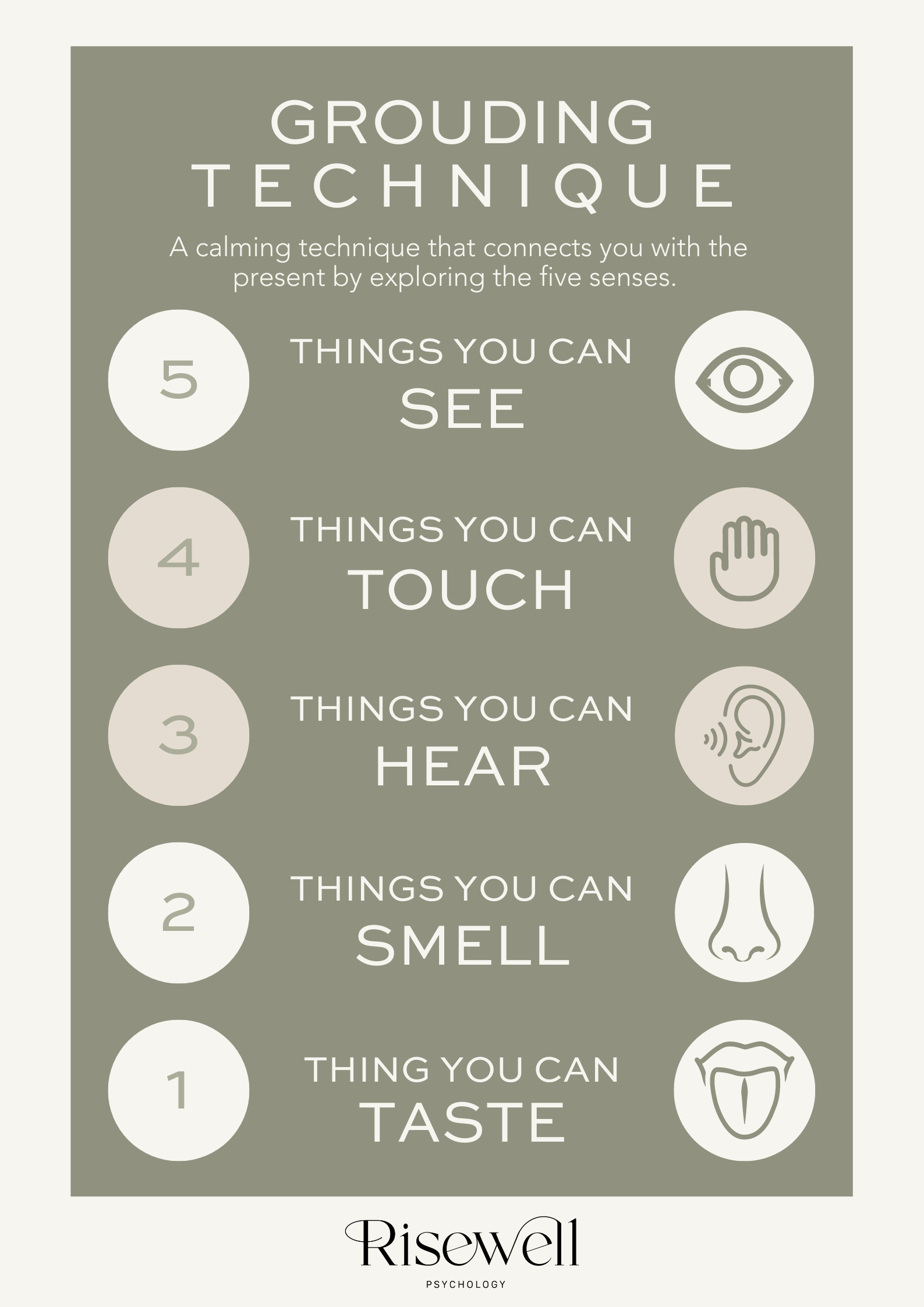Embracing Routine: An Anchor Admist a Full Life
September 9, 2024
Written by: Camille Granda (she/her), BBA, RYT As the leaves start to change and the air turns crisp, there’s always a familiar shift that comes with the fall season. It’s a time that brings the promise of new beginnings and the steady hum of back-to-school energy. As the days grow shorter and the crisp air of autumn settles in, I find myself reflecting on the rhythm of life - the way it ebbs and flows, much like the changing of seasons. I’m always in awe of the quiet beauty in the transition from summer to fall, a time when nature itself seems to embrace routine. A poem by Maya Angelou called, “Late October” comes to mind to describe this season of change:
Carefully
the leaves of autumn
sprinkle down the tinny
sounds of little dyings
and skies sated
of ruddy sunsets
of roseate dawns
roil ceaselessly in
cobweb grays and turn
to black
for comfort.
Only lovers
see the fall
a signal end to endings
a gruffish gesture alerting
those who will not be alarmed
that we begin to stop
in order simply
to begin
again.
- Maya Angelou
Angelou’s words always deeply resonate with me, especially now, as I navigate the final semester of my Masters of Counselling Psychology degree. Because, amidst finishing my Masters and working with the amazing humans at Risewell Psychology, I also teach trauma-informed yoga to families and their kiddo’s, contribute my time to the nonprofit sector through the United Way, and prepare for my upcoming practicum here in January!
My life is full, and I mean the kind of full that I’d describe my plate on Thanksgiving dinner. Brimming with stuffing, turkey, potato dumplings, veggie casserole, cranberries and a heaping amount of gravy – that kinda full. Like a plate of Thanksgiving dinner, it fills my soul with so much gratitude for all the amazing responsibilities and opportunities that currently fill my life, although at times, I’ll admit, can be overwhelming.
Now, I don’t list off my laundry list of activities just to overshare. But I mention it because, despite my full plate, I empathize and understand how easy it can be to feel overwhelmed, like the cobweb grays of Angelou’s skies. This is where routine often becomes my anchor, grounding me as I navigate the fullness of life.
At Risewell Psychology, where our focus includes women’s mental health, neurodivergence, trauma-informed care, and somatic healing practices, I’ve seen how routine can play a pivotal role in the healing and growth of not only our clients, but on my personal wellness journey as well.
So, what is Routine?
What does ‘routine’ really mean? As we explore together different viewpoints and perspectives to define routine, I encourage you to sit and reflect on what ‘routine’ truly means to you. To start this exploration, let’s dive into what the research defines as routine:
According to Fiese et al. (2022), routine refers to a structured set of activities that provide predictability and a sense of control in our lives.
In traditional yoga philosophy, routine is understood through the principles of abhyasa (consistent practice) and vairagya (non-attachment). These concepts remind us that while it’s essential to engage in regular practice, or “routine”, we must also cultivate a sense of detachment from the outcomes. As Iyengar (2005) explains, this balance allows us to maintain a steady mind and find peace amidst the inevitable ups and downs and seasons of life. In essence it’s about showing up each day with intentional dedication, but also with the flexibility to adapt to things that may not go as planned.
Routine according to McGonigal (2012) serves as a powerful tool for prioritizing our values. By embedding our core values into our daily routines, we ensure that our actions align with what truly matters to us. McGonigal suggests that routines help reduce decision fatigue by automating the behaviours that support our well-being, leaving us with more energy to focus on other important areas of our lives. For instance, if one of your core values is health, incorporating regular physical activity into your routine becomes a non-negotiable part of your day.
So how can we embrace our own individual definitions of routine, and use it as an anchor amidst a full life? Here are a few tips and tricks:
Identify your Core Values:
Start by identifying what truly matters to you, as understanding your core values is the foundation for building a life that aligns with your deepest beliefs and priorities. A helpful tool in this process is the Values in Action (VIA) Inventory, a guide that can help in clarifying your values and strengths (Peterson & Seligman, 2004; Ruch et al., 2010). You can also try this physical interactive hand held card deck exercise, called The Live your Values by Lisa Congdon and Andreea Niculescu.
Once you’ve established your core values, consider creating routines that align with them. For instance, if one of your values is health, incorporating regular exercise into your daily routine can reinforce this value. As Clear (2018) discusses in Atomic Habits, understanding your values helps in building habits that stick because they resonate with your core identity. To further reinforce these routines, try revisiting your values periodically and adjusting your habits to ensure they remain in harmony with your evolving priorities.
Start Small:
Don’t overwhelm yourself with revamping your entire routine all at once. Begin with one or two small habits that support your values and build from there. For example, if your value is centered on relationships, you could begin with a daily check-in with a loved one or setting aside time each evening to connect with your partner.
In Atomic Habits, Clear (2018) emphasizes the power of starting with tiny changes to create sustainable habits over time. He references a study from University College London, which found that, on average, it takes about 66 days to reinforce a habit to the point where it becomes automatic. Consistent repetition is crucial for reinforcing a habit, as it helps reduce decision fatigue by automating these behaviours. In other words, the more automatic your routine becomes, the more aligned you will feel, and the more time you will have to make decisions in bigger areas of your life. So start small and see how that fits into your routine!
Incorporate Mindfulness:
Use your routine as an opportunity to practice mindfulness. Whether it’s during your morning coffee or your evening walk, take a few moments to be fully present … and I mean fully present. Ditch the phone, ditch the earphones, block off 10 mins … and perhaps try this exercise. I call it the 5, 4, 3, 2, 1 grounding technique.
5, 4, 3, 2, 1 Grounding Technique.
Helpful tip: Screenshot the following image, so you can have it on hand whenever you want to incorporate some mindfulness or want to feel a little bit more grounded.
This exercise begins by naming:
5 things you can see,
4 things you can feel (go and physically touch them too!),
3 things you can hear,
2 things you can smell (bonus points if you close your eyes when you smell these things), and
1 thing you can taste.
In yoga, we often refer to these as moving meditations. I often describe to the kids I work with that yoga or mindfulness is not just limited to your mat or physical asana (posture or pose) practice. It can be incorporated into our daily routine and can be achieved through consistent practice, not perfection.
If you haven’t read it already, check out our May blog, Mindfulness for the Mindfulness-Resistant ADHD Mind, written by our very own Kelsey Moss, Registered Provisional Psychologist and RYT, which includes more in-depth tools and tips on incorporating mindfulness into your routine and how this can contribute to your overall mental health.
Reflect and Recalibrate Regularly:
Finally, reflect and recalibrate regularly. Take time to assess your routines and make adjustments as needed to ensure they’re still serving you. Regular reflection allows for growth and adaptation. I also use the word recalibrate, very intentionally, because it’s like the age old saying … “don’t throw the baby out with the bathwater.” This saying emphasizes the importance of recalibration or making small adjustments or tweaks, rather than discarding or trying to completely re-do something entirely.
I often have to remind myself of this quote, because it reminds me that even if parts of a system, plan, or routine aren’t working perfectly, there is no need to abandon the entire thing; instead you could focus on improving small areas while keeping what still works.
For example, if you find that your morning routine is leaving you rushed or stressed, consider making a minor tweak, such as waking up 15 minutes earlier or preparing breakfast the night before. Ask yourself: What small change can I make to improve my routine? Are there specific parts of my day that consistently feel overwhelming, and how can I adjust them? This approach is supported by research that suggests small, incremental changes can lead to significant improvements in overall well-being (Prochaska & DiClemente, 1983).
As we embark on this fall season, I encourage you to reflect that, like the changing leaves and seasons, we can use this time in our lives to help us pause, as Angelou wrote, “in order simply to begin again.” So, as you navigate the fullness of your life, this fall season, I encourage you to embrace routine as your anchor, guiding you back to what truly matters; and to simply give yourself permission to begin again, time and time again.
References:
Clear, J. (2018). Atomic habits: An easy & proven way to build good habits & break bad ones. Avery.
Desikachar, T. K. V. (1999). The heart of yoga: Developing a personal practice. Inner Traditions International.
Fiese, B. H., Tomcho, T. J., Douglas, M., Josephs, K., Poltrock, S., & Baker, T. (2002). A review of 50 years of research on naturally occurring family routines and rituals: Cause for celebration? Journal of Family Psychology, 16(4), 381–390. https://doi.org/10.1037/0893-3200.16.4.381
Iyengar, B. K. S. (2005). Light on life: The yoga journey to wholeness, inner peace, and ultimate freedom. Rodale Books.
McGonigal, K. (2012). The willpower instinct: How self-control works, why it matters, and what you can do to get more of it. Avery.
Prochaska, J. O., & DiClemente, C. C. (1983). Stages and processes of self-change of smoking: Toward an integrative model of change. Journal of Consulting and Clinical Psychology, 51(3), 390-395. https://doi.org/10.1037/0022-006X.51.3.390
Ruch, W., Proyer, R. T., Harzer, C., Park, N., Peterson, C., & Seligman, M. E. P. (2010). Values in Action Inventory of Strengths (VIA-IS): Adaptation and validation of the German version and the development of a peer-rating form. Journal of Individual Differences, 31(3), 138–149. https://doi.org/10.1027/1614-0001/a000022
Sarkisian, C. A., Prohaska, T. R., Wong, M. D., Hirsch, S., & Mangione, C. M. (2021). Routine physical activity and health-related quality of life in older adults. Journal of the American Geriatrics Society, 49(9), 1201-1211. https://doi.org/10.1046/j.1532-5415.2001.4910153.



